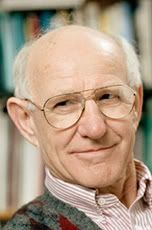- - -

Influenza Pandemic.
It is possible for avian and human viruses to combine, creating a new virus for which humans would have no antibodies.
Robert G. Webster, PhD (virologist, Memphis TN) theorizes that the only event that has to occur to begin a flu pandemic is the mixing of avian and human flu strains in the same mammalian cell - most likely in a pig. Pigs are similar enough in genetic makeup to humans that they are susceptible to the human flu.
In many areas, pigs come in close contact with chickens or ducks, making it likely that they will catch the avian flu. Ducks, while capable of catching and transmitting the avian flu virus through contact with chickens, seldom sicken and die from the exposure. Being alive and quite healthy, the ducks are then capable of spreading the virus to other areas.
The most famous and lethal outbreak was the so-called Spanish flu pandemic (type A influenza, H1N1 subtype), which lasted from 1918 to 1919. Older estimates say it killed 40-50 million people while current estimates say 50 million to 100 million people worldwide were killed. This pandemic has been described as "the greatest medical holocaust in history" and may have killed as many people as the black death. This huge death toll was caused by an extremely high infection rate of up to 50%, and the extreme severity of the symptoms.
- - -





